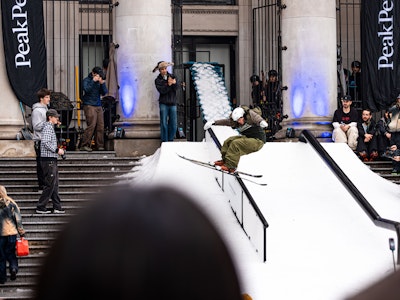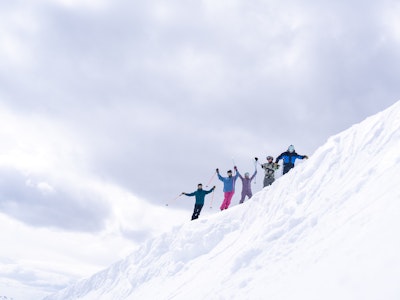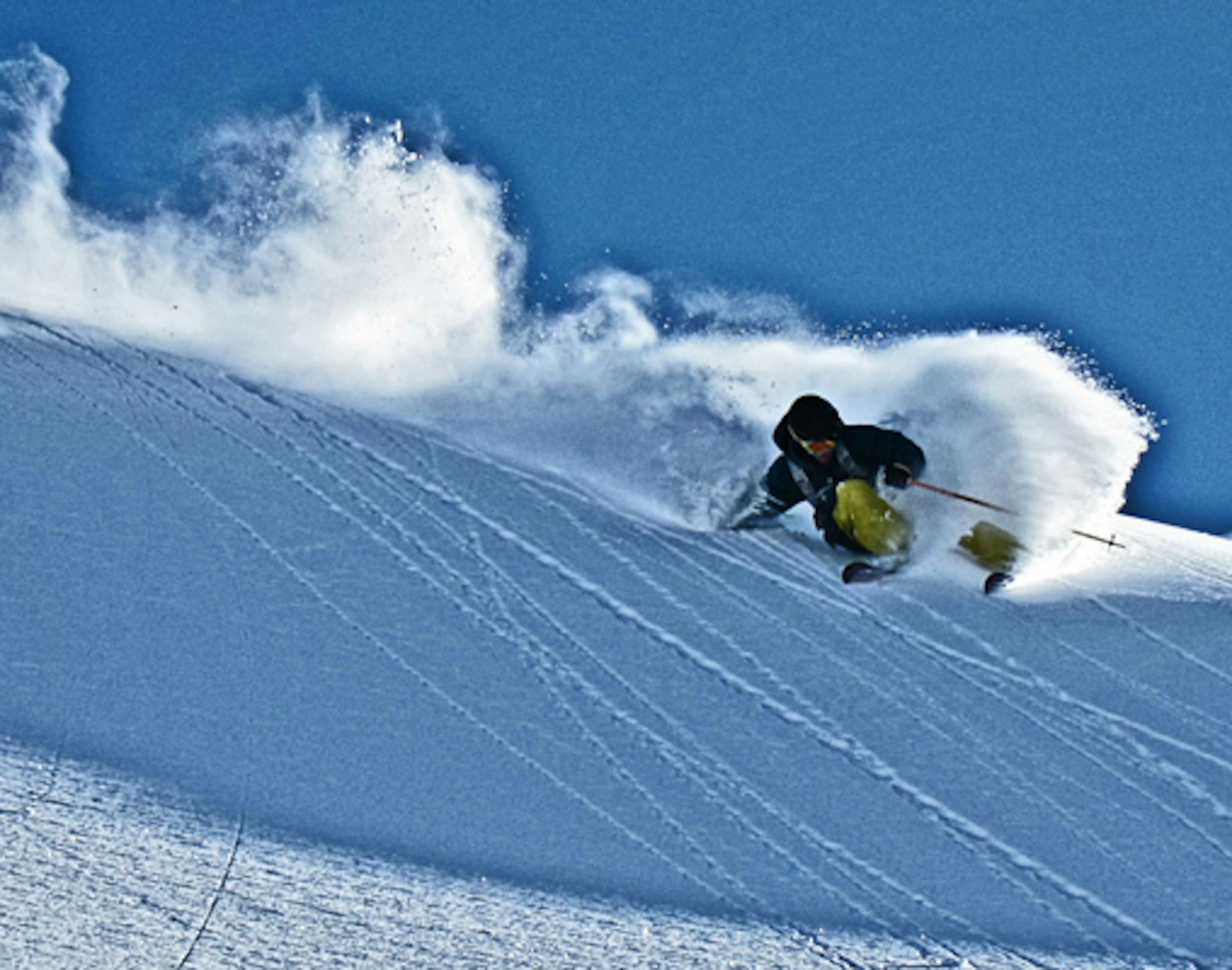Last January, at the end of the month, my plans for the season started to come together. I got a phone call from the boys at MSP and they let me know about a possible trip to Switzerland. The photos of the potential terrain that were e-mailed my way had me gripped. I would soon be leaving the icy slopes of Tahoe feeling unprepared for what lay ahead.
The plans changed last minute and we were bound for Alaska. The crew consisted of James Heim, Samuel Anthamatten, Richard Permin and myself. I was still a little nervous, but after talking to Ingrid [Backstrom], she reassured me that if there was anyone I would want to be on a trip with, it was James Heim.
She was right. After spending most of my ski season with Heimer, I joked about paying him to come on trips with me. James’ sharing of his knowledge and experience in the mountains has been invaluable to me as a rookie with the MSP crew.
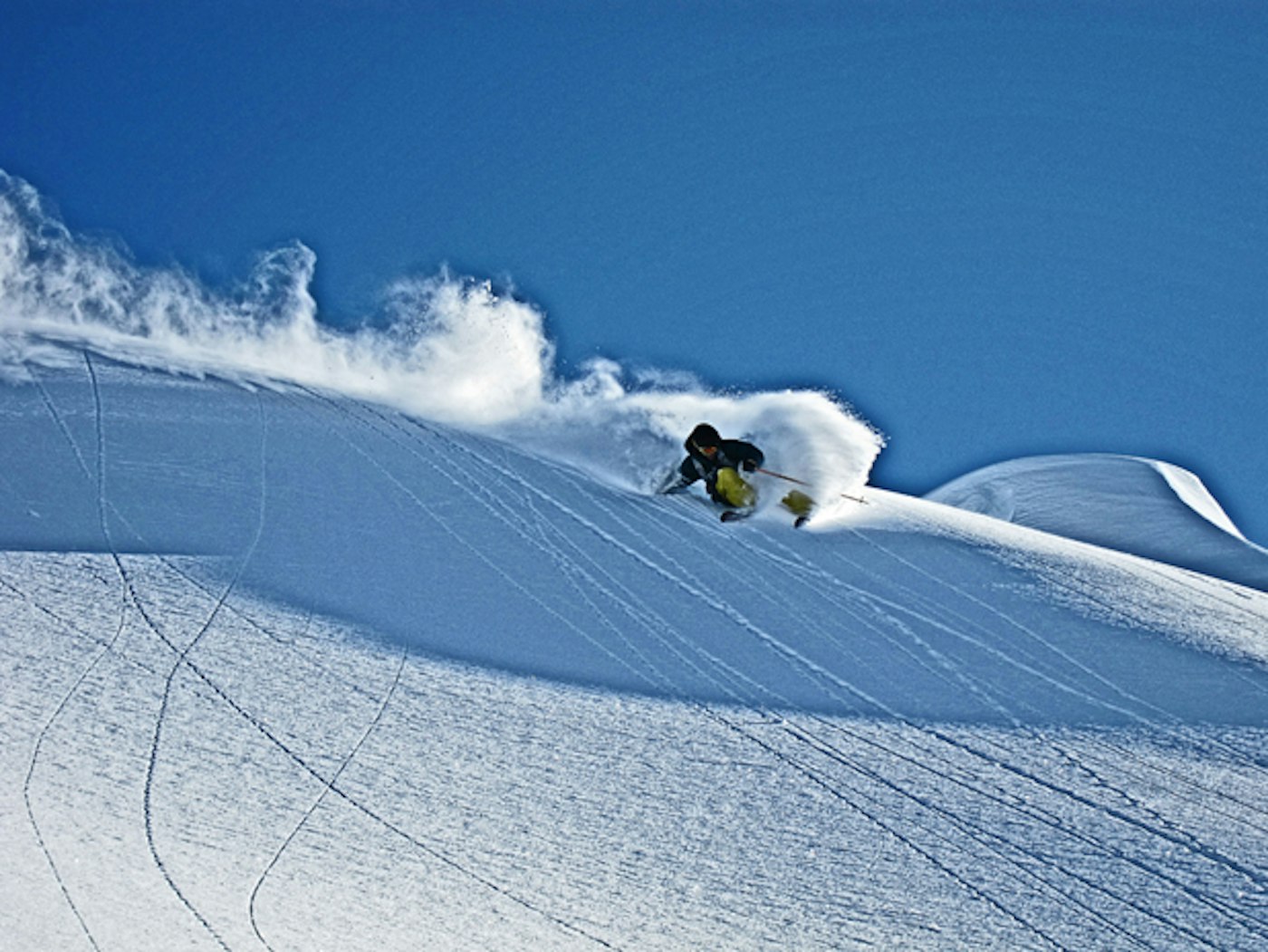
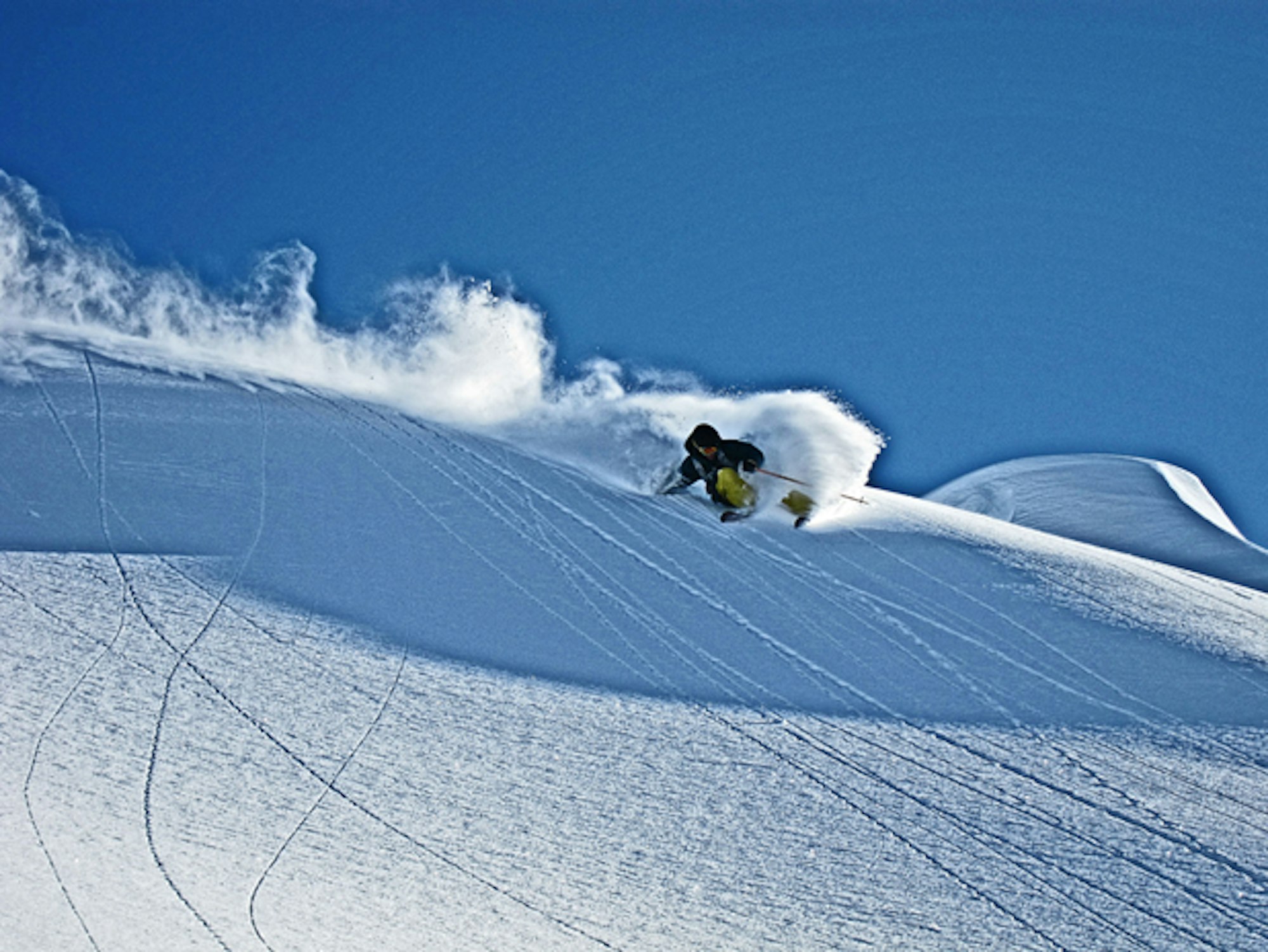
Heim cuts ‘er deep in Whistler, BC earlier this season. Photo by Michelle Parker.
As I write this, Heimer and I are down in Portillo, Chile. It’s spring here and you can hear the water melting on the rocks like a constant stream throughout the day. While we are both looking forward to a ping-pong tournament taking place later on today at our hotel, I decided to dig a little bit to learn more from Heimer.
Michelle Parker: How many years have you been filming, and what has been the most valuable lesson you have learned throughout those years?
James Heim: I have been filming for about nine years. This was my 6th season filming with MSP, and before that I filmed with Theory-3 Media and Jeff Thomas. The most valuable lessons I have learned are line choices, and reading the terrain. This can really only come from experience in the mountains and learning from each line. I think most people when they start out filming hit flatter landings, lines that don’t flow really well or lines that you didn’t really feel 100% about, but it was sunny, so you went for it.
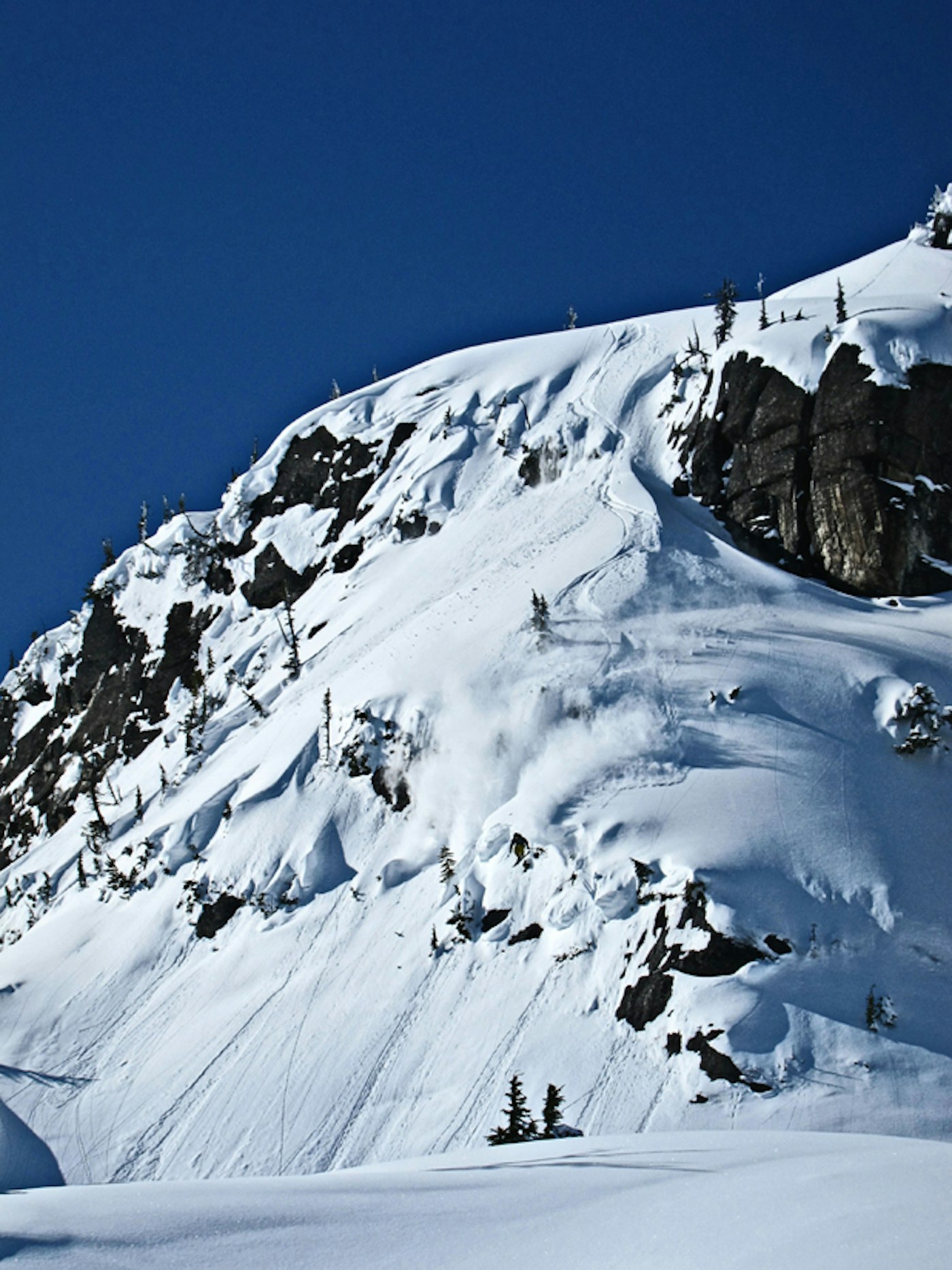
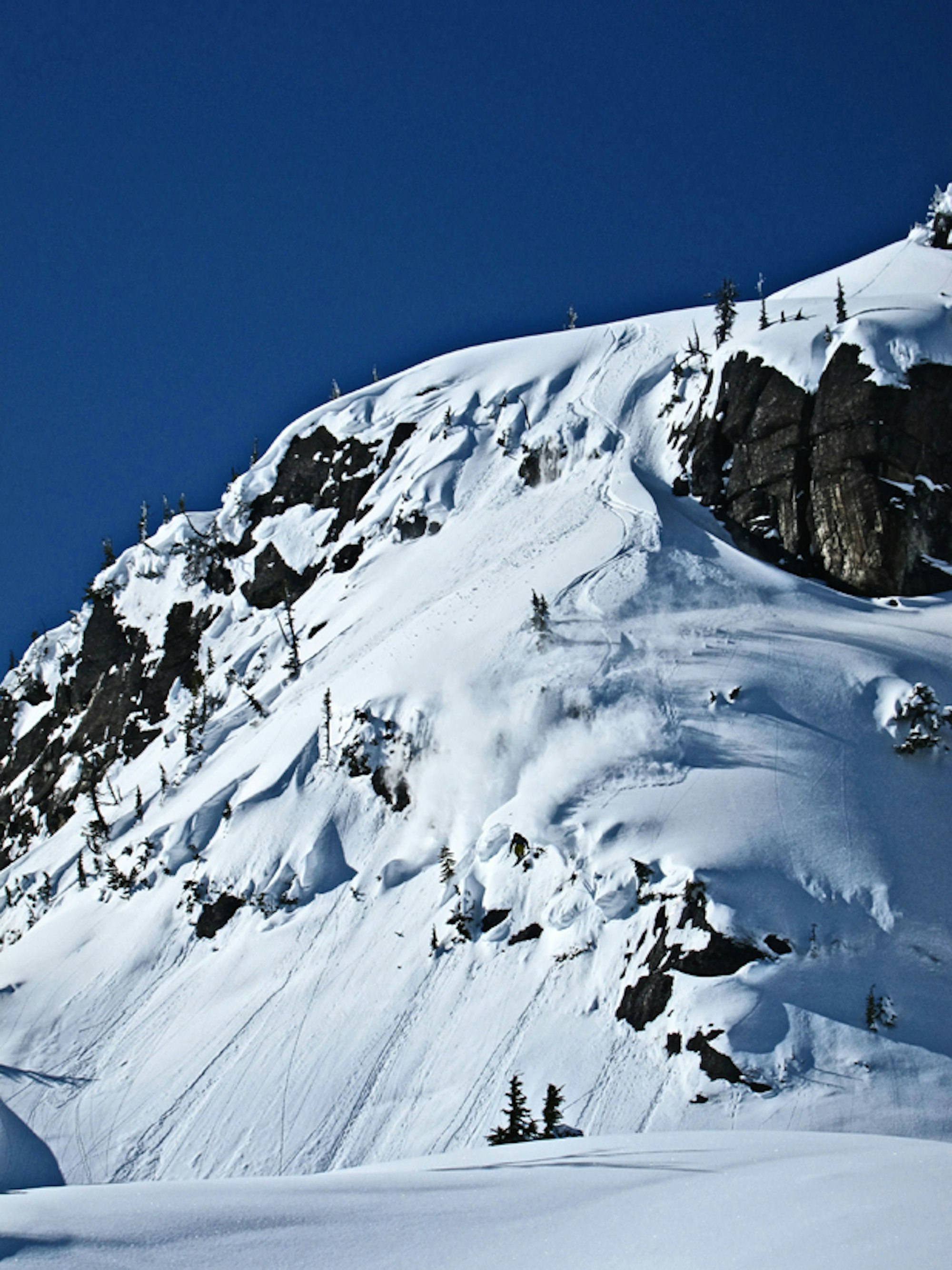
MP: This year, you’ve taught me a ton just by listening to you talk about film lines and being around you in the mountains. Do you have anyone in particular who you feel you learned from in the beginning of your film career?
JH: The whole MSP crew is great to work with and they all have tons of experience in the mountains. You can learn something different from each member, but Hoji [Eric Hjorleifson] if anyone, is someone I feel I have learned from and who I really enjoy filming with. He has a very creative eye for lines and is a great partner in the mountains. Jeff Thomas was another who at the beginning of my filming days was someone who pushed me in a very positive way. Besides being friends, we had a great working relationship in the mountains and I trusted his opinion 100% about line choices. It is great to have someone who you rely on to help with difficult line choices, especially as you are gaining experience.
[Above: Doing your homework never felt so good. Whistler, BC. Photo by Michelle Parker.]
MP: When you look at a line, what are the most important aspects that you take into consideration?
JH: There are three main aspects that I look for when scouting a new line, assuming that the snow is good, it is sunny and there is no avy danger [which we all know doesn’t happen as much as we would like]. The first is the landing or runout at the end of a line. I tend to look from the bottom up to find good transitions and clean exits. Even if the start of the line looks like the best ski ever, without a happy ending, you might be a little sore. The next is usually scale of the line. Binoculars are the best tool for realizing the size of the features you are about to throw yourself off of. You can ski much more aggressively if you are confident that your 40-footer is actually a 40-footer. Another important aspect is being able to study the slope from top to bottom knowing where you will be able to see your line or where the rollovers are. Rollovers can make lines much more difficult and can confuse you to the point where you slow down or stop. It is very important to find landmarks in your line to navigate your way safely and confidently. Film lines, like big-mountain competition runs, look their best when the skier is skiing hard and confident with no hesitation.
MP: Describe your thought process when choosing a line, and then filming the line. What goes into it?
JH: My thought process when choosing a film line usually happens quite quickly. Usually there isn’t that much time to choose and study your line. Hopefully when you get to a zone, something pops out right away that you really think will be fun and challenging, but also skiable. If that is the case then all I do is take a photo, study the line as much as time will allow, and then get right up to the top. It can be much more difficult than that as usually you aren’t the only skier filming on a given day. Sometimes if there aren’t enough good lines you might have to let the other skiers get first pick and then try to make something work afterwards.

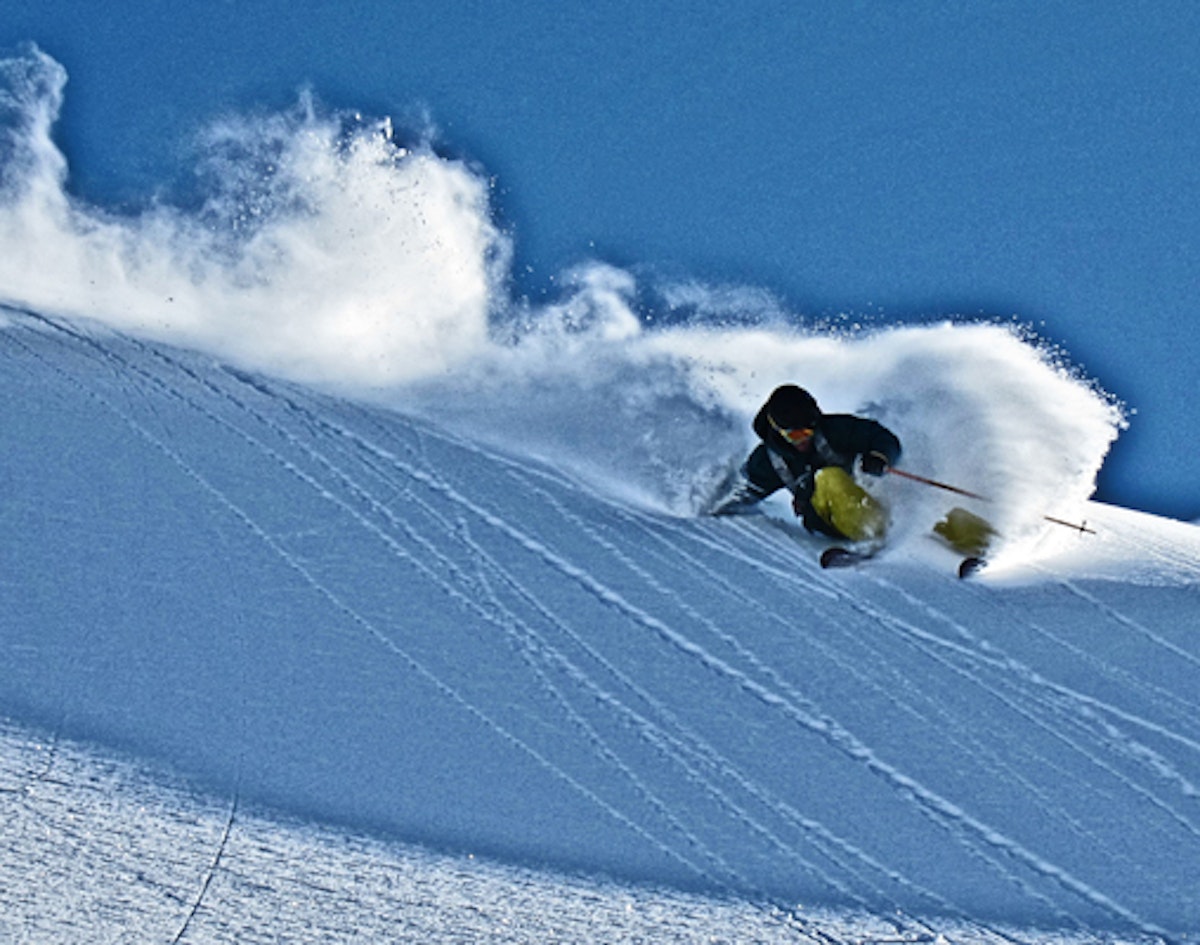
![[GIVEAWAY] Win a Legendary Ski Trip with Icelantic's Road to the Rocks](https://www.datocms-assets.com/163516/1765233064-r2r26_freeskier_leaderboard1.jpg?w=200&h=200&fit=crop)
![[GIVEAWAY] Win a Head-to-Toe Ski Setup from IFSA](https://www.datocms-assets.com/163516/1765920344-ifsa.jpg?w=200&h=200&fit=crop)

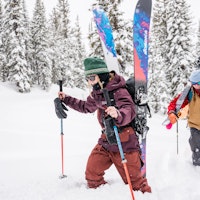
![[GIVEAWAY] Win a Legendary Ski Trip with Icelantic's Road to the Rocks](https://www.datocms-assets.com/163516/1765233064-r2r26_freeskier_leaderboard1.jpg?auto=format&w=400&h=300&fit=crop&crop=faces,entropy)


![[GIVEAWAY] Win a Head-to-Toe Ski Setup from IFSA](https://www.datocms-assets.com/163516/1765920344-ifsa.jpg?auto=format&w=400&h=300&fit=crop&crop=faces,entropy)


